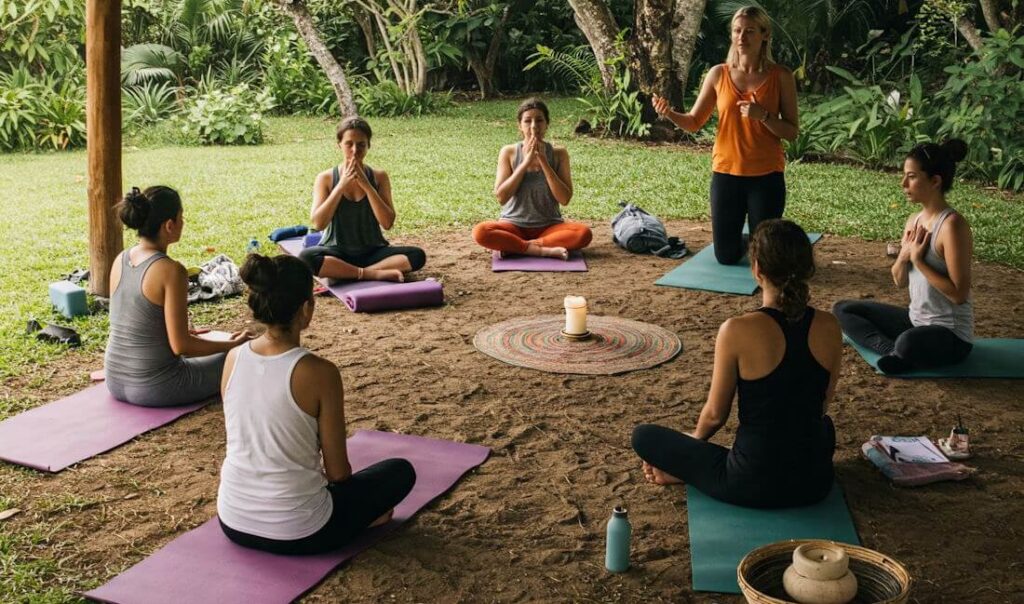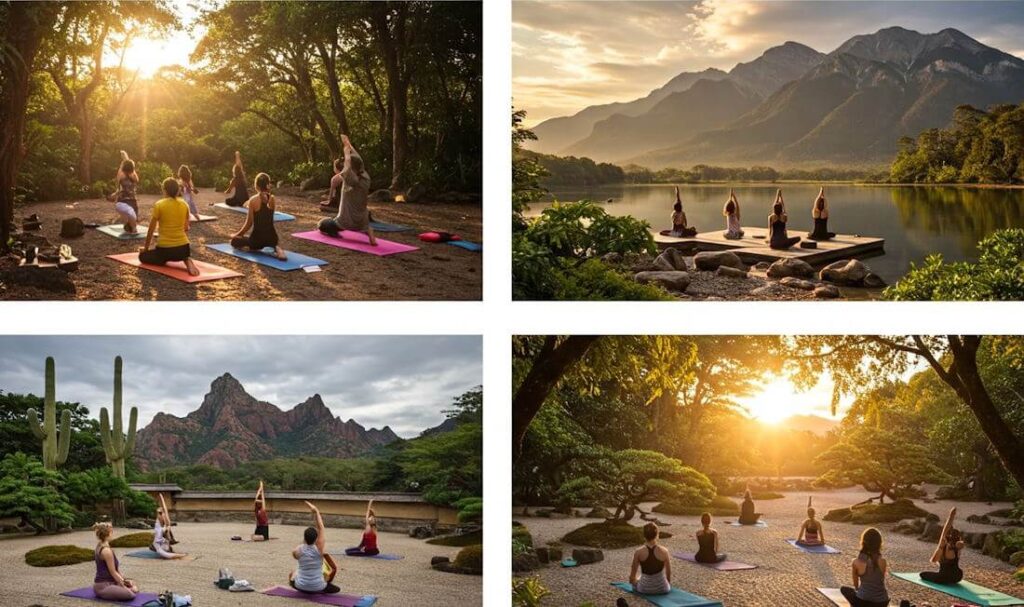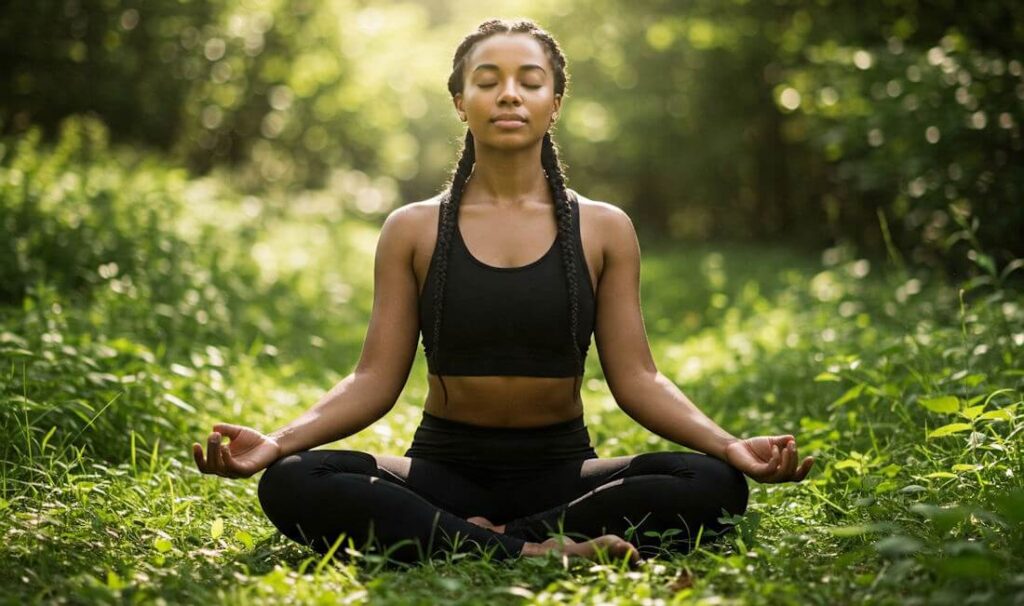Breathwork, a practice that involves various techniques focused on the conscious regulation of breathing, has garnered significant attention in recent years, especially within the context of yoga retreats. At its core, breathwork aims to enhance the connection between body and mind, facilitating a deeper state of awareness and relaxation. This practice encompasses a wide array of methods, from deep diaphragmatic breathing to rhythmic patterns that can induce a meditative state or even catharsis.
In yoga retreats, breathwork serves as a powerful complement to the physical postures and meditative techniques typically explored. Practitioners are encouraged to explore their breath as a means of aligning with their inner selves, which can greatly enhance the experience of yoga. The integration of breathwork into these retreats not only deepens the physical practice but also opens pathways to emotional release and psychological healing. Participants often find that focusing on their breath allows for greater introspection and clarity, which is particularly beneficial in a retreat setting designed for personal growth.
The growing popularity of breathwork in yoga retreats can be attributed to its ability to create a holistic experience. Many attendees report transformative effects, including reductions in stress, increased emotional resilience, and improved overall well-being. By incorporating breathwork into daily yoga sessions, retreat facilitators foster an environment where participants can realize the full potential of their yoga practice. Furthermore, this union of breath and movement emphasizes mindfulness, an essential aspect of both yoga and breathwork.
As we explore the role of breathwork in yoga retreats, it becomes evident that this practice is more than a simple technique; it is a gateway to profound personal transformation and healing.
The Science Behind Breathwork
Breathwork, a practice that emphasizes the intentional regulation of breath, has garnered attention for its profound impact on both mental and physical health. At its core, breathwork is deeply rooted in principles from psychology and neuroscience, which help elucidate how the act of controlled breathing can significantly alter our physiological state. One of the primary effects of breathwork is its ability to influence the autonomic nervous system, which regulates involuntary bodily functions. Engaging in specific breathing techniques can shift the balance between the sympathetic (fight or flight) and parasympathetic (rest and digest) systems, leading to a state of relaxation.
Research indicates that regulated breathing patterns can lower levels of the stress hormone cortisol while increasing the production of endorphins and serotonin, neurotransmitters associated with feelings of well-being and happiness. This physiological response triggered by proper breath control can serve as a natural antidote to stress and anxiety, making breathwork a valuable tool in emotional regulation and mental clarity. Furthermore, studies have shown that breathwork enhances mindfulness by encouraging individuals to focus on their breath and present moment, cultivating a deeper sense of awareness and presence.
On a physical level, breathwork can improve oxygenation of the body and enhance overall lung function. Increased oxygen levels can lead to better circulation and energy levels, contributing to overall vitality and health. It also plays a pivotal role in emotional release by facilitating the expression of stored emotions in the body. By engaging in specific breath patterns, individuals can access and process deep-seated feelings, leading to catharsis and emotional healing. Thus, the scientific principles surrounding breathwork reveal its multifaceted benefits for enhancing mindfulness, reducing stress, and promoting emotional well-being. As such, embracing breathwork can lead to transformative changes in personal health and overall quality of life.
Enhancing Mindfulness and Presence
Breathwork serves as a powerful tool to deepen one’s mindfulness and presence during yoga practices. By consciously controlling breathing patterns, practitioners can enhance their overall experience, allowing for a more profound connection with their bodies and the present moment. Integrating breathwork into yoga sequences not only elevates the physical practice but also cultivates emotional and mental awareness.
One effective technique involves synchronized breathing, where participants inhale and exhale in unison with a specific rhythm that complements their movements. This synchronization not only provides a visual and auditory cue but also fosters a sense of communal energy among practitioners. As the breath aligns with postures, individuals can better understand their physical sensations, promoting awareness of tension, relaxation, and the overall energy flow within their bodies.
Another method is known as diaphragmatic breathing, which encourages practitioners to breathe deeply into their diaphragm rather than shallowly into their chest. This technique can be particularly beneficial during challenging poses, as it encourages a calm and centered mindset. Concentrating on the breath in this way allows for greater focus and attention, leading to enhanced mindfulness and a more profound presence in the practice.
Furthermore, incorporating breath counts can help participants maintain focus during meditation or challenging sequences. By counting the breaths, practitioners can anchor their thoughts and bring awareness back to the here and now whenever distractions arise. This focus serves not only as a mindfulness tool but also as a mechanism to acknowledge thoughts without judgment, which is essential for the practice of yoga.
Overall, integrating breathwork into yoga increases participants’ connection to the present moment. By enhancing these techniques, yoga practitioners can unlock a greater understanding of themselves and experience a richer journey both on and off the mat.
Facilitating Emotional Release and Healing
Breathwork serves as a profound tool for emotional release and healing, unlocking deep-seated traumas and facilitating personal transformation. The intricate connection between breath, emotions, and our body’s energy systems highlights the powerful role that conscious breathing plays in achieving emotional balance. When individuals engage in breathwork during yoga retreats, they often find themselves navigating a range of emotions, from joy to sadness, which can lead to significant breakthroughs.
The act of mindful breathing stimulates the parasympathetic nervous system, helping to soothe anxiety and stress. As participants delve deeper into various breathwork techniques, such as the circular or rhythmic breathing patterns, they may access heightened states of awareness where emotions can surface and be processed. Anecdotal evidence from individuals who have attended yoga retreats supports the notion that these practices can lead to pivotal healing moments. For instance, one participant recounted their experience of uncovering suppressed grief associated with a loss, allowing them to fully express their feelings in a safe environment. This cathartic release not only alleviated their emotional burden but also fostered a greater sense of clarity and purpose.
Additionally, breathwork can impact the body’s energy systems, aligning chakras and promoting the flow of prana, or life energy. Many practitioners report feeling lighter and more connected to their emotional state after a breathwork session. This somatic experience underscores the importance of understanding how the body stores emotions and how breath can aid in the process of emotional healing. Overall, incorporating breathwork into yoga retreats empowers individuals to explore their inner landscapes, promoting emotional release and paving the way for healing and personal growth.
Creating a Safe Space through Breathwork
In the context of yoga retreats, cultivating a safe and supportive environment is essential for effective breathwork. Participants often engage in profound personal exploration during breathwork sessions, making it imperative that facilitators prioritize comfort and emotional security. A conducive setting enables individuals to open themselves up to deeper breathing techniques and unleash their potential for emotional release and healing.
Facilitators should begin by establishing clear communication with participants prior to the breathwork sessions. This includes outlining the session’s structure, what participants can expect, and encouraging them to express any concerns they may have. Transparency helps assuage anxiety and builds trust within the group. Moreover, facilitators should emphasize confidentiality, ensuring that experiences shared during breathwork remain private among participants. Such assurances foster a greater sense of safety, allowing individuals to freely engage in deep breathing practices without fear of judgment.
Physical space plays a pivotal role as well. The environment should be comfortable and welcoming, with adequate lighting and spatial arrangements that facilitate movement and relaxation. Considerations such as ambient music, soft mats, and accessible cool-down areas contribute to an inviting atmosphere. Furthermore, allowing participants to customize their personal space—such as choosing blankets or cushions—can enhance comfort levels.
Facilitators must also be attuned to the emotional landscape of the group. Watching for signs of discomfort during breathwork sessions and being prepared to adapt approaches is imperative. Providing options, such as choosing between different breathing techniques or allowing individuals to rest if overwhelmed, can empower participants in their practice. Ultimately, when practitioners feel secure and supported, the transformative potential of breathwork within yoga retreats can be fully realized, leading to profound shifts in awareness and self-discovery.
Integrating Breathwork into Daily Retreat Practices
In the context of yoga retreats, breathwork serves as both a complementary and transformative practice that can be seamlessly integrated into daily schedules. Incorporating various breathwork techniques throughout the day enhances participants’ overall experience and deepens their connection with both body and mind. There are several methods to achieve this integration, ensuring that breathwork becomes an essential element of the retreat.
One effective method is to initiate each day with a dedicated breathwork session, providing attendees with the tools to cultivate mindfulness and awareness before diving into yoga practices. Techniques such as Box Breathing or Alternate Nostril Breathing can set a calming tone for the day. Pairing these methods with gentle morning yoga flows allows participants to transition from breath to movement effortlessly, reinforcing the connection between breath and body.
During the afternoons, breathwork can be used as a bridge between different retreat activities. When participants transition from a vigorous morning yoga session to a calmer meditation, practicing techniques like Diaphragmatic Breathing can serve to center thoughts and stimulate relaxation. Incorporating this method invites participants to become more present in their meditation practice and encourages deeper introspection.
Additionally, integrating breathwork into group discussions serves to foster community and enhance connection. Employing techniques such as Coherent Breathing before sharing personal reflections or engaging in dialogue allows individuals to feel more grounded and connected with their fellow attendees. By synchronizing breath with words, participants can cultivate an environment of openness and support.
Ultimately, the integration of breathwork into daily retreat practices not only enhances the physical aspects of yoga but also promotes mental clarity and emotional stability. By thoughtfully pairing breathwork with various activities, retreats can provide a holistic experience that empowers participants to take their newfound skills beyond the confines of the retreat atmosphere.
Breathwork Techniques to Try at Yoga Retreats
Breathwork is an integral component of yoga retreats, known for enhancing physical, mental, and spiritual well-being. Practicing various breathwork techniques during these retreats can significantly deepen participants’ experiences. Below is a selection of effective breathwork techniques, complete with step-by-step instructions, benefits, and guidance on suitable contexts for each.
1. Diaphragmatic Breathing
This technique focuses on using the diaphragm effectively for a fuller, richer breath. To practice, find a comfortable sitting or lying position. Place one hand on your chest and the other on your abdomen. As you inhale deeply through your nose, focus on expanding your abdominal area while keeping your chest relatively still. Exhale slowly through your mouth, observing the natural contraction of the abdomen. This technique promotes relaxation, reduces stress, and improves oxygen flow, making it an excellent warm-up for other practices.
2. Box Breathing
Box breathing is a powerful technique that involves inhaling, holding the breath, exhaling, and holding again, each for an equal length of time. Start by inhaling deeply for a count of four, holding your breath for another four, then exhaling for four counts, and briefly holding again. Repeat this cycle four to five times. This method encourages mindfulness and can be particularly beneficial during times of anxiety or emotional turbulence.
3. Alternate Nostril Breathing
This balancing technique is excellent for harmonizing the body and mind. To perform alternate nostril breathing, sit comfortably and use your right thumb to close your right nostril. Inhale deeply through your left nostril, then close it with the right ring finger. Open the right nostril and exhale completely. Inhale through the right, close it, and exhale through the left. This cycle can be repeated for several minutes, helping to promote mental clarity and emotional stability.
Each of these techniques offers unique advantages and can be incorporated into various sessions throughout a retreat. Experimenting with these exercises can enhance participants’ experience, foster a greater connection with oneself, and deepen the overall practice of yoga.
Testimonials and Experiences from Retreat Participants
Breathwork has emerged as a transformative practice within the realm of yoga retreats, offering participants profound insights and benefits that often lead to significant life changes. Numerous individuals who have immersed themselves in breathwork sessions during these retreats have shared their compelling stories of transformation. For example, Anna, a former corporate executive, recounted her emotional release during a breathwork exercise that allowed her to confront long-repressed feelings of anxiety. She described how the profound connection created through intentional breath not only helped her release tension but also guided her toward a greater understanding of her emotional landscape.
Similarly, James, an athlete who sought to enhance his physical performance, discovered that breathwork significantly improved his stamina and mental clarity during his yoga practices. He stated, “The controlled breathing techniques I learned at the retreat allowed me to access deeper levels of concentration, which translates fluidly into my athletic pursuits.” This reflection indicates how breathwork can transcend the yoga mat and infuse into various aspects of life, from sports to daily responsibilities.
Furthermore, Sarah shared her experience with breathwork as a spiritual awakening. She spoke about how the retreat environment fostered a sense of safety, enabling her to explore her inner self deeply. During one session, she reported feeling an overwhelming connection with nature and the universe, attributing her newfound sense of peace and alignment to the breathwork practices taught by the instructors. These testimonies illustrate that breathwork is not merely a tool for relaxation; it is a gateway to personal growth and self-discovery.
As these narratives show, the impact of breathwork at yoga retreats goes beyond the physical realm, touching on emotional and spiritual dimensions. Participants consistently report enhanced well-being, emotional resilience, and a renewed sense of purpose in their lives, demonstrating the power of breath as a catalyst for change.
Conclusion: Embracing Breathwork for a Transformative Retreat Experience
In the realm of yoga retreats, breathwork emerges as a pivotal practice that enhances physical, mental, and emotional well-being. By focusing on the breath, participants can unlock profound levels of relaxation and mindfulness, elevating their overall retreat experience. Throughout the exploration of breathwork’s benefits, we have outlined how its integration into yoga sessions can facilitate deeper connections with oneself and others, promote emotional healing, and foster a state of blissful presence.
Breathwork techniques such as Pranayama enable practitioners to regulate their energy flow, thus enhancing their yoga practice. Participants at yoga retreats who engage in breathwork often report feelings of increased clarity, emotional release, and a more profound sense of connection to their surroundings. These experiences not only resonate on a personal level but also contribute to the communal atmosphere of retreat gatherings, making them more enriching and transformative.
For retreat organizers, incorporating breathwork into their offerings presents an opportunity to elevate the overall experience for attendees. By integrating structured breathwork sessions, participants can gain tools that extend beyond the retreat, empowering them to carry the benefits into their daily lives. It is essential for organizers to recognize the significance of breathing techniques and to position breathwork as a fundamental aspect of the retreat schedule.
In conclusion, embracing breathwork can transform yoga retreats into profound journeys of personal development. As more individuals explore and engage with these practices, they can expect to emerge from their retreat experiences with renewed energy, clarity, and insight. For those planning to embark on a yoga retreat, incorporating breathwork into their journey may just be the key to unlocking a deeper level of transformation, connection, and fulfillment.



